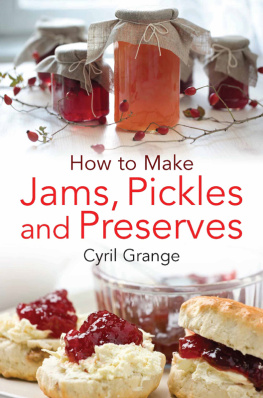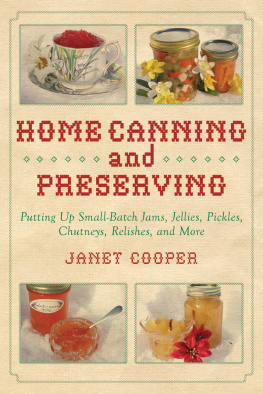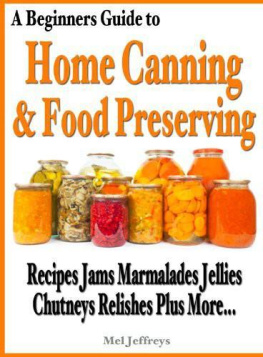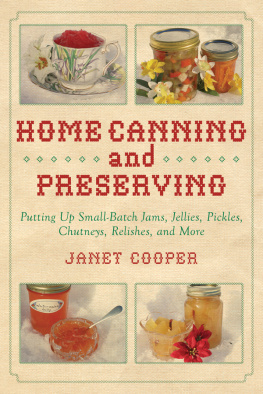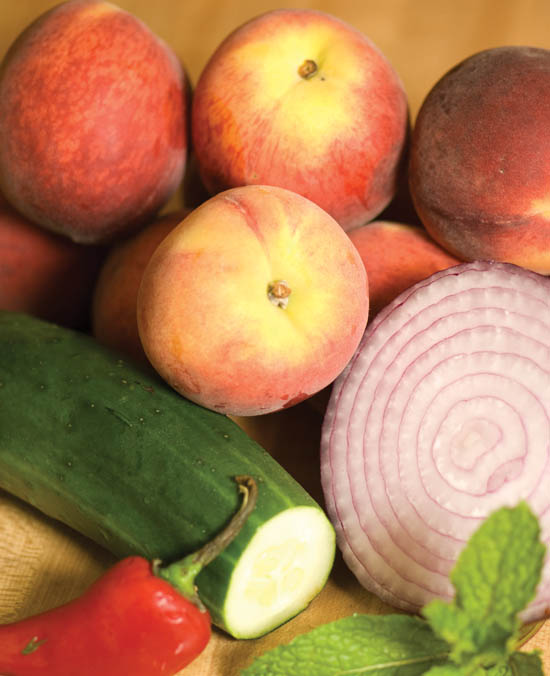Putting Up More
A Guide to Canning Jams, Relishes, Chutneys, Pickles, Sauces, and Salsas
Stephen Palmer Dowdney
Photographs by Rick McKee

Putting Up More
A Guide to Canning Jams, Relishes, Chutneys, Pickles, Sauces, and Salsas
Digital Edition v1.0
Text 2011 Stephen Palmer Dowdney
Photographs 2011 Rick McKee
All rights reserved. No part of this book may be reproduced by any means whatsoever without written permission from the publisher, except brief portions quoted for purpose of review.
Home-canned products may cause serious harm if put up improperly. As a safety precaution, every recipe in this book must be read carefully and the instructions followed accordingly. The recipes and information in this book have been tested to ensure accuracy. Gibbs Smith, Publisher, and the author assume no responsibility for any damages, losses, or injuries incurred during the use of this book or the consumption of products canned following its directions.
Gibbs Smith, Publisher
PO Box 667
Layton, UT 84041
Orders: 1.800.835.4993
www.gibbs-smith.com
ISBN: 978-1-4236-1516-3
To Thomas Heyward Dowdney, best friend and confidant, business partner and son, who worked side by side with me for so many years as we struggled to give to our community the best put-up products anywhere in America, I dedicate this book.
Acknowledgments
Writing a book is much like sketching the lines for a new automobile. From a sleek drawing to putting in the key, turning on the ignition, and driving off in a car that will hopefully be a marketing success by meeting so many of a populations wants, dreams, and demands, is a monumental undertakingwith the drawing being just one action.
For me, that action would never have been if it were not for Christopher Robbins, CEO of Gibbs Smith, and his belief in me that I could do it one more time. Thank you, Christopher! And then there is my editor, Linda Nimori. I appreciate more than words can describe her steadfast attitude not to silence even my tiniest peep but rather to force me to say what I wanted within her space confines. Thank you, Linda, thank you! There are fifty-one professionals at The Barn, as Gibbs Smith calls his headquarters, and the Distribution Center. Every person has and plays a part and, although I might not know their names, I know of their work. Theirs is of the highest caliber I have ever witnessed in any industry. I am grateful to be included as part of such a team.
Layout can often determine the success of a project such as this. I attribute much of the success of my first book to the way that Debra McQuiston designed it. I have the utmost faith that this book will be equally judged as perfectionism to the nth degree.
There is no better test of a recipe than to sample and attempt to sell it. My business partner at the local farmers markets does this for me. Without Lee Lambert, I would find myself operating in a vacuum much of the time. He tastes and gives his opinion, plus I know what he REALLY thinks when he talks up a new product. Further, it is not so easy for an artist (of sorts) to promote his own work. I find it, well, embarrassing. Lee is like my gallery manager. I could not ask for a finer marketer.
And then there is the crew, that group of friends who is willing to offer more than a dont quit your day job as criticism, like the friend who suggests the addition of this and the removal of that, its too sweet or not sweet enough, use balsamic not cider, and so forth. Every recipe needs tweaking, and Pamela was definitely the tweaker. Always after the initial recipe is set, my first guinea pig is my mother. Sometimes its difficult to get her to criticize my work, but she does have her subtle Southern ways, like the time she said, Well, Steve, it sure looks beautiful in the jar! To all these professionals and friends, I give a very big thank you, for without each and every one of you, this book would not be. Thanks again!
Introduction
Canning is a science; canning is an art. Canning requires a bit of common sense, the ability to read, and the willingness to follow instructions; to know and understand the very basics of culinary disciplinelike how to peel a carrot or chop an onion without peeling or chopping a finger. The really good news is that the art of canning requires a minimum amount of study, the understanding of only a few very basic concepts, and a willingness to spend the time necessary to create products that will have and hold a fresh flavor unlike anything that can be purchased anywhere, regardless of price. If this might be you and your desire, then become a studentand welcome to a new world. After a few pages and your first foray into the world of putting things up, you and your familys dining life will change forever and for the better.
There are two distinctly different canning modalities: low acid and acid/acidified. Low acid involves a procedure where higher than boiling temperatures, produced by steam under pressure, heat a product for a specified time and temperature to produce a safe and sterile product. The process involves pressure vessels, extreme heat, and critical timing. The home preserver using this method is often putting away raw produce for use later in the year. This might work for a handful of garden varieties, but the majority of basic put-up produce requires such high heat applications that even out-of-season, fresh, store-bought imports are a better, more nutritious, and often the less expensive course. Consequently, I do not recommend this method for standard canning practices.
The second is acid and/or acidified mixtures, a method where jarred recipes are sterilized and rendered safe by a combination of an acid level, a temperature that is lower than boiling water, and a vacuum. This method of canning involves a process where the home preserver prepares for storage-completed recipes using fresh, ripe-harvested, often local, produce. There is no equal to such preserved jars, and this becomes the focus of Putting Up More.
Nearly half the meals eaten in the United States are consumed away from home or are made with foods commercially prepared. Fast food is unhealthy, restaurant food is expensive, and prepared foods for home consumption are most often produced with the lowest-bid commodities or, put bluntly, the cheapest stuff available. The problem compounds further because gourmet home cooking takes skill, talent, and often lots of training. And preparation takes time, often more time than is available; plus, fancy meals are expensive to prepare, very expensive. Home canning ushers in a successful alternative. Home put up recipes like many in this book and in the previous volume, Putting Up, can turn the simplest of fares into exciting restaurant-grade presentations while affording superior dining experiences. Along with the recipes in this book are many personal successes and best uses for each along with a step-by-step narrative.
But the advantage of home preserving isnt just for dining. When family members get involved in the canning process, not only do they build a ready-made pantry of relishes, pickles, preserves, sauces, and soups to enhance what otherwise might be just another lackluster meal, they create an activity spanning from the harvest or purchase of produce, to preparing and readying the recipe, to finally going through the canning process. There are tasks aplenty for almost all ages and activities that build unity, strengthening the family bond. I cannot tell you the numbers of people from all over the country who come to our local farmers market booths to sample, only to begin reflecting (sometimes with a tear) upon the days of their youth with a parent or grandparent. They speak as if those were the best times of their childhood, and they might well have been. The simple art of canning can do that for a family, for it binds them close from field to table!

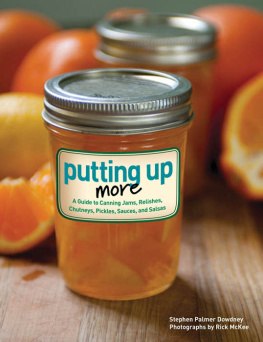
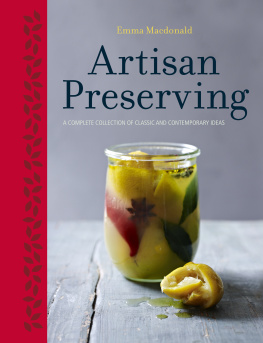
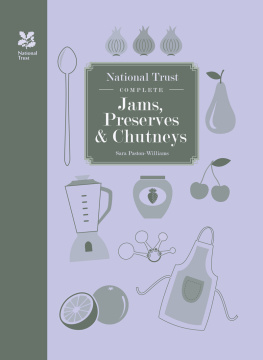
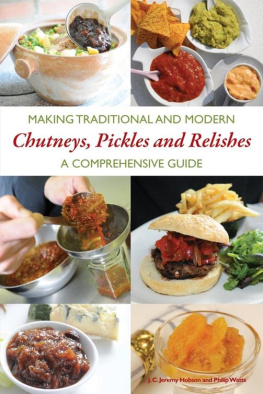


![Better Homes - Better homes and gardens you can can: [a guide to canning, preserving, and pickling]](/uploads/posts/book/188232/thumbs/better-homes-better-homes-and-gardens-you-can.jpg)
